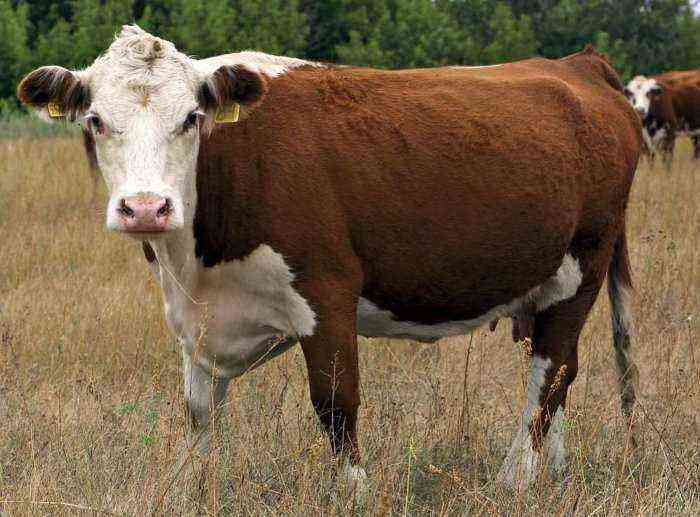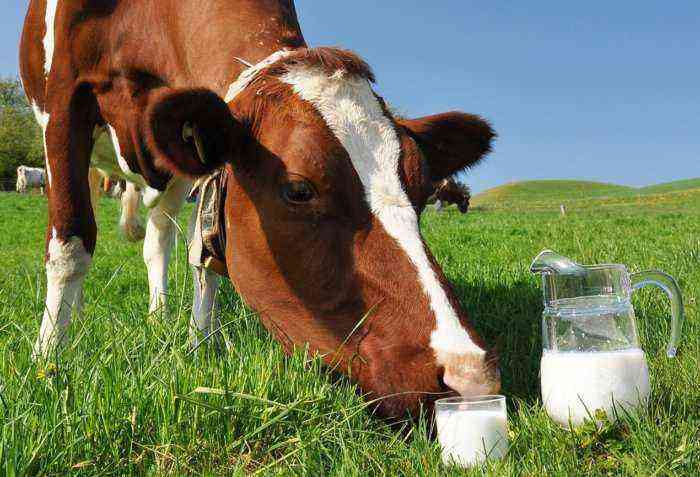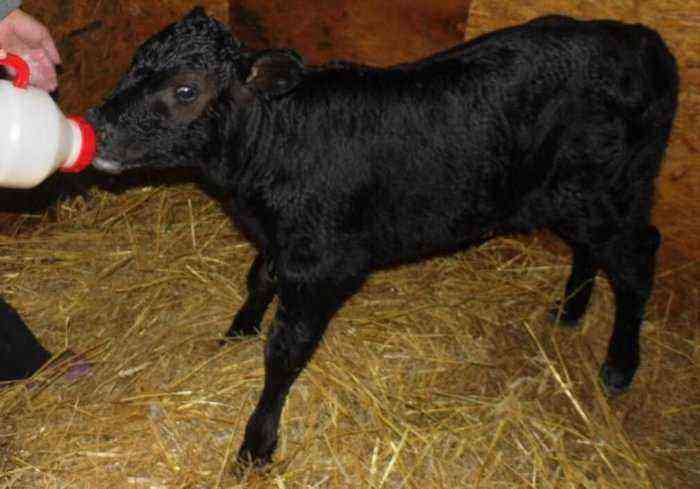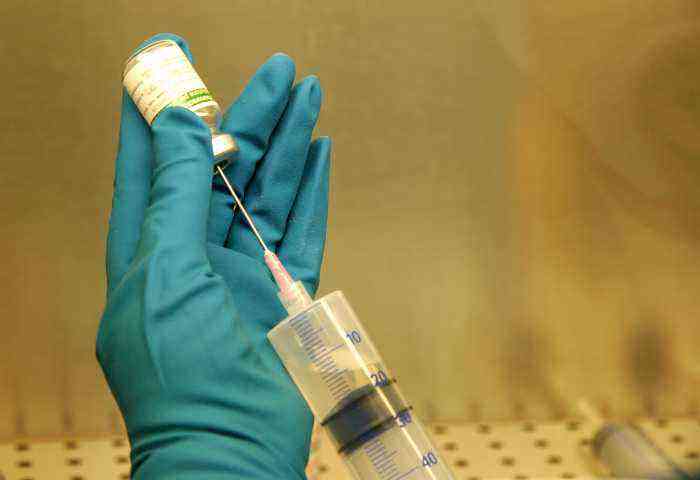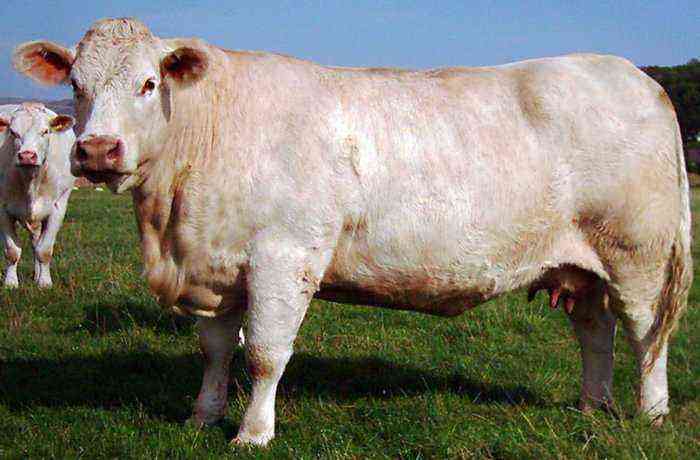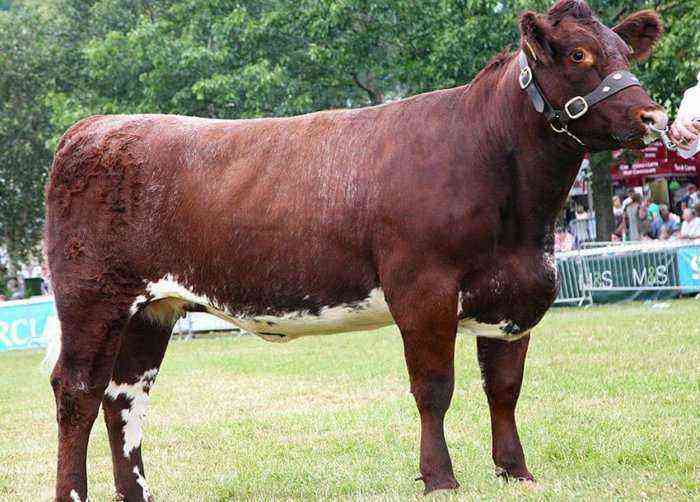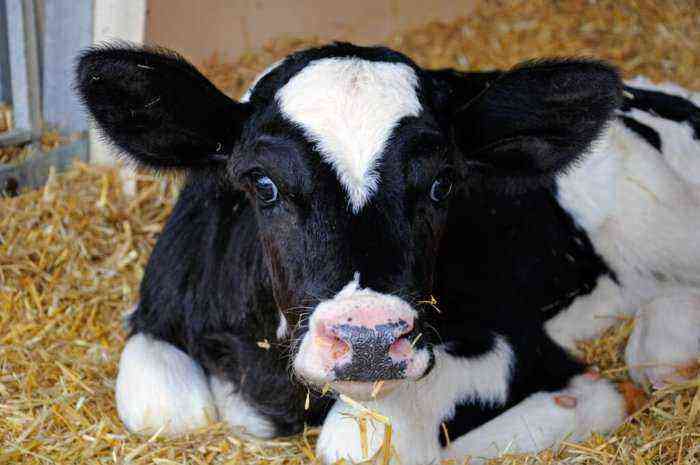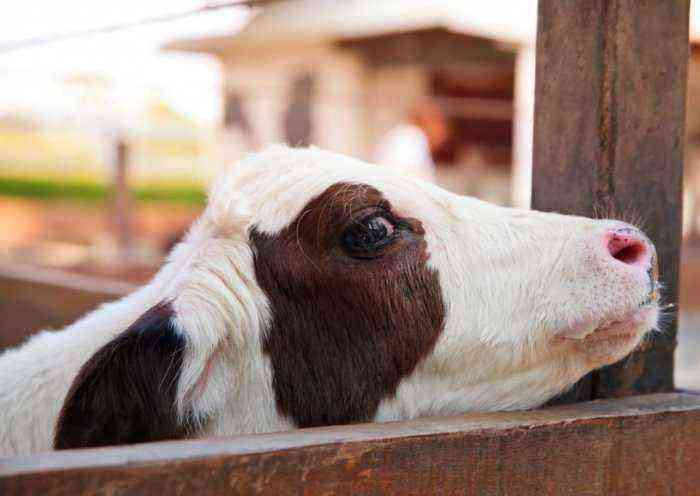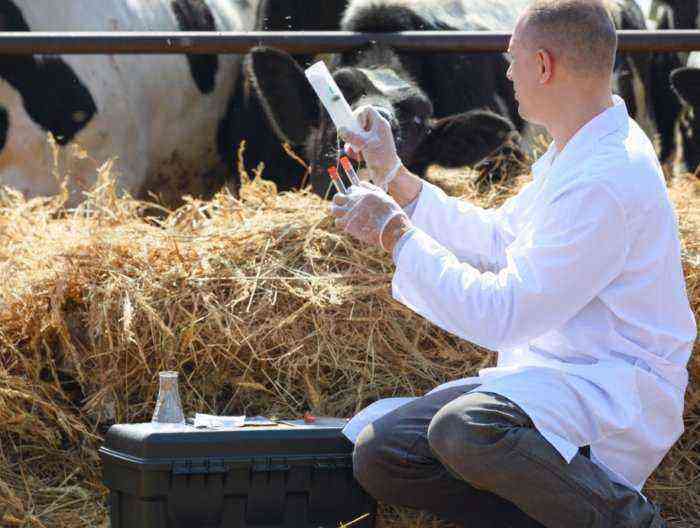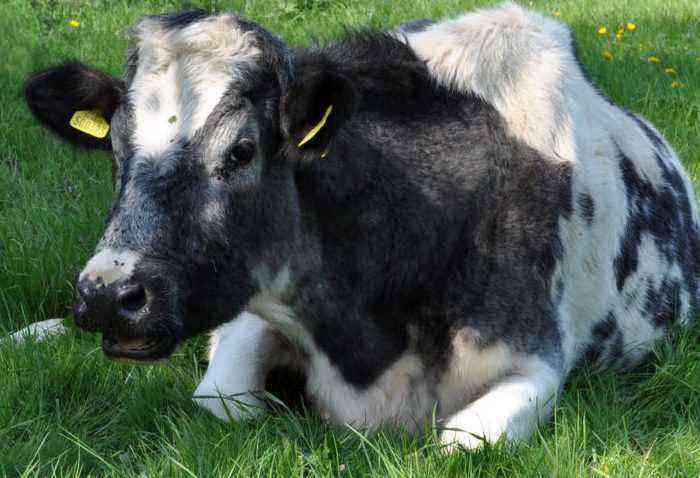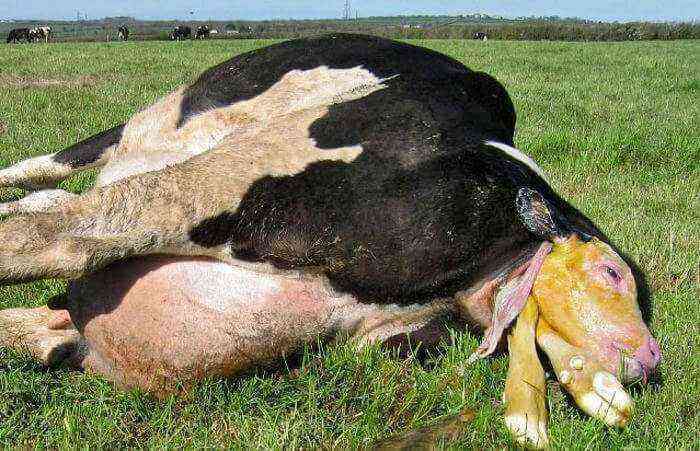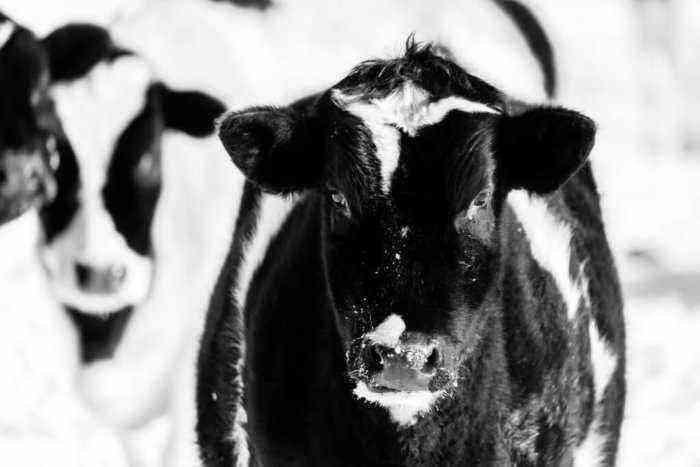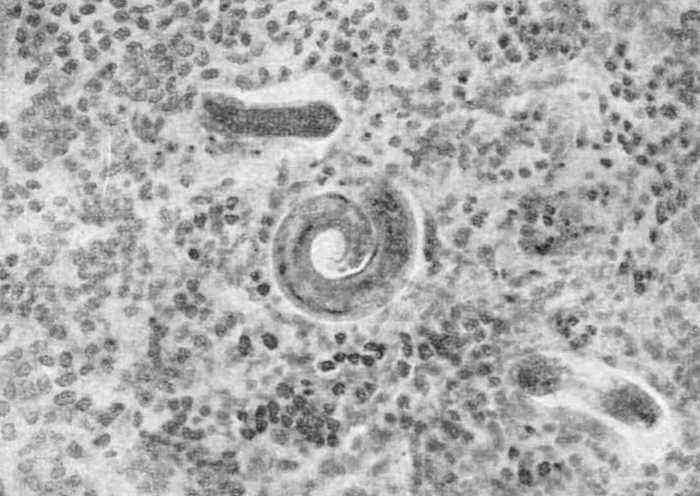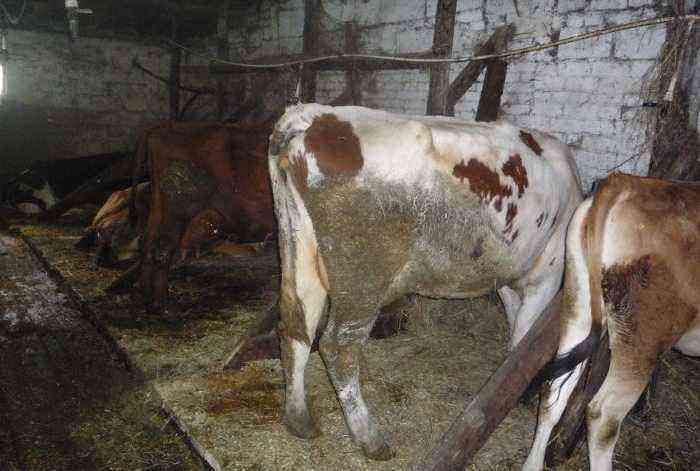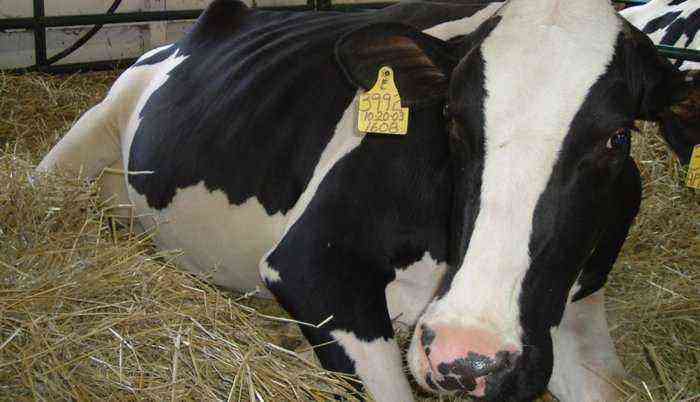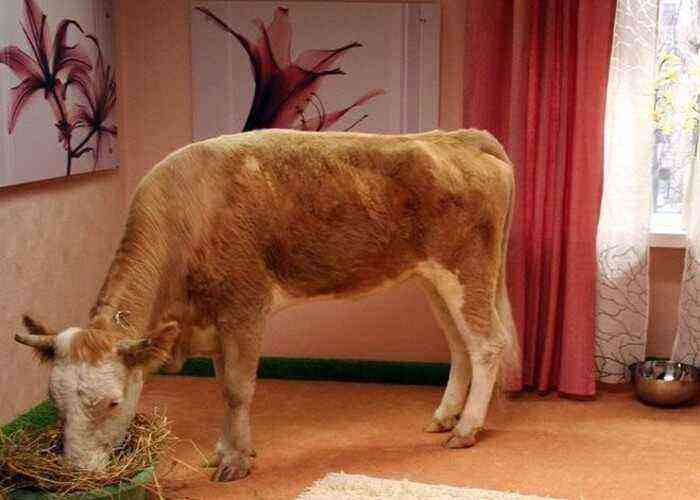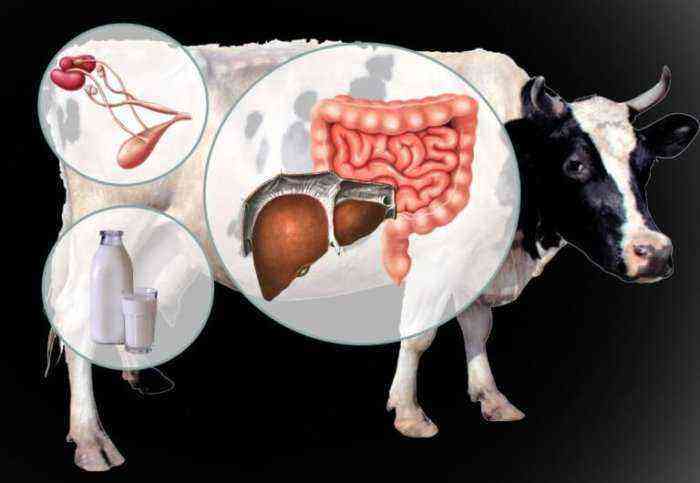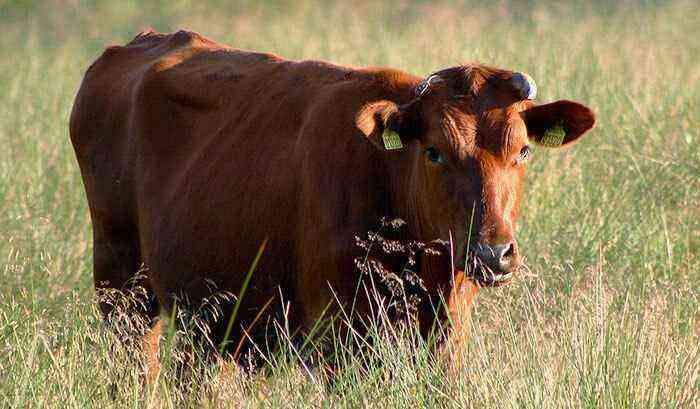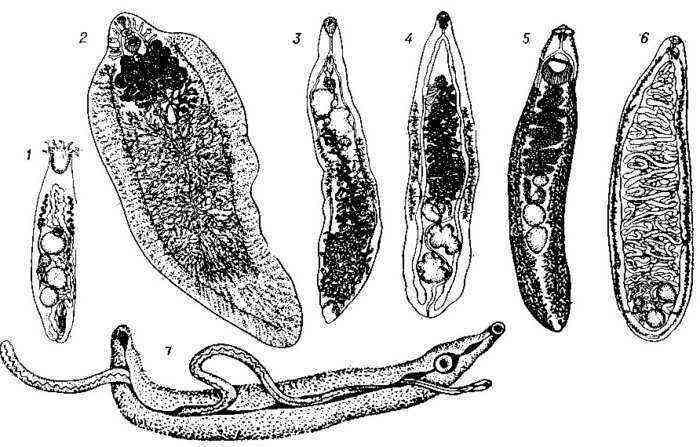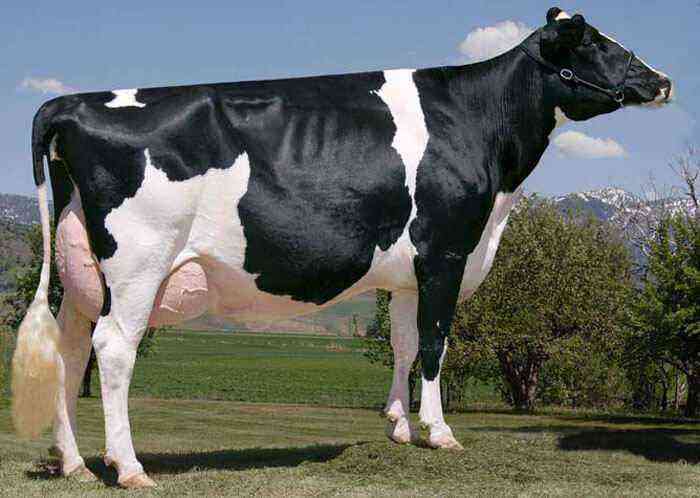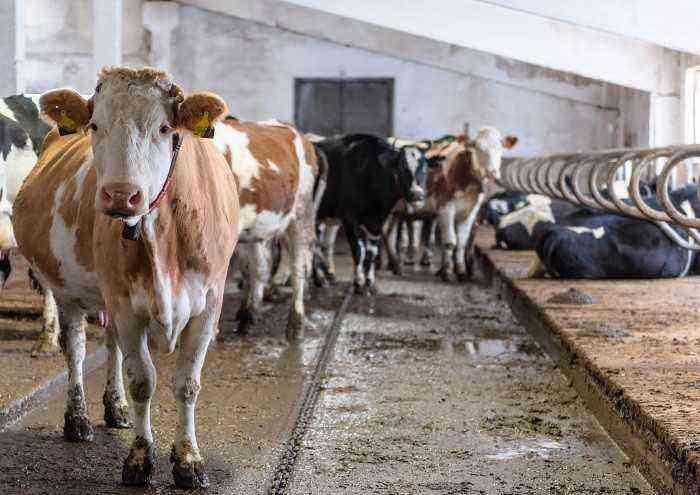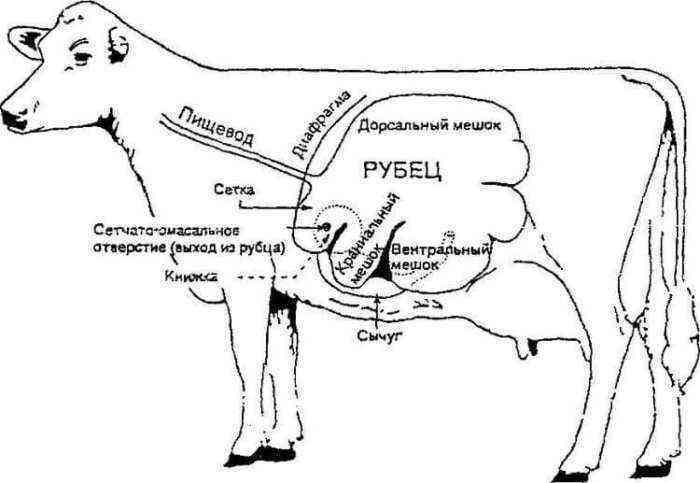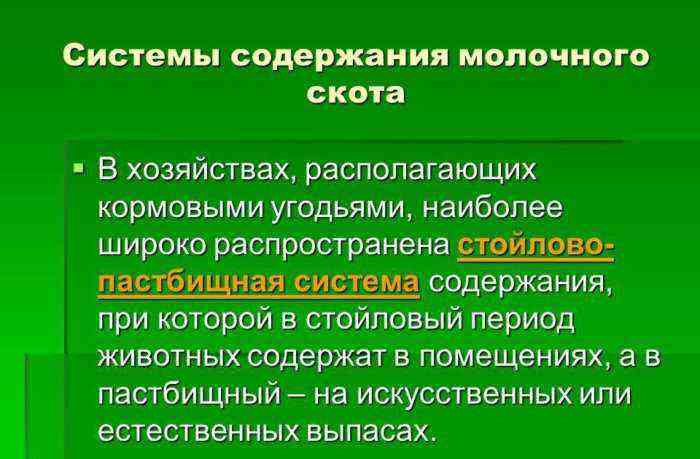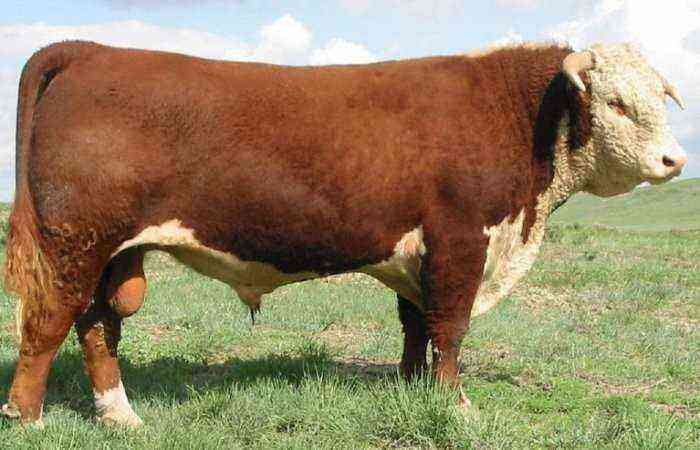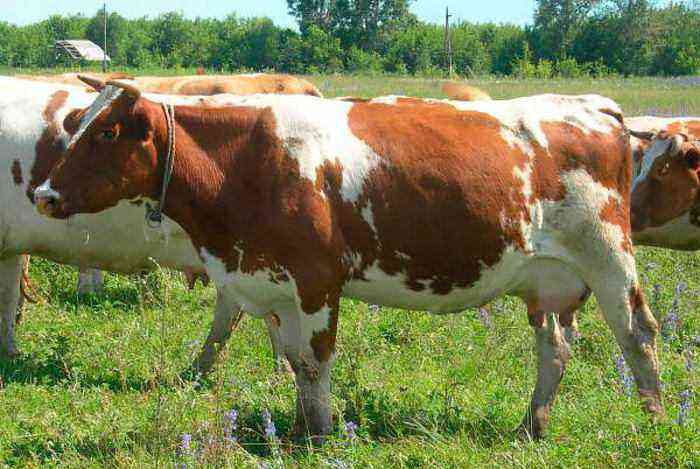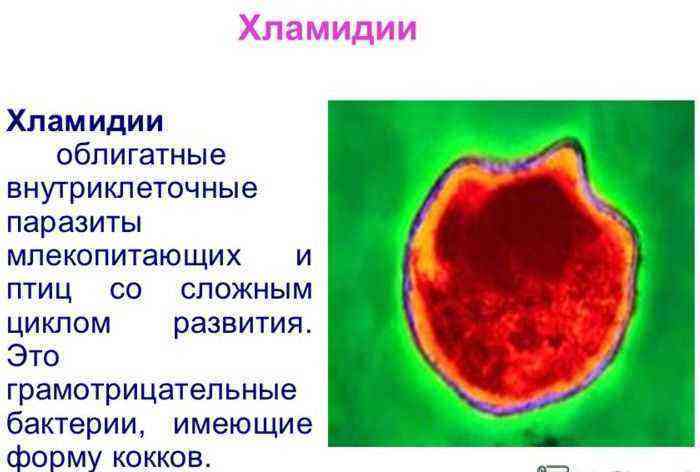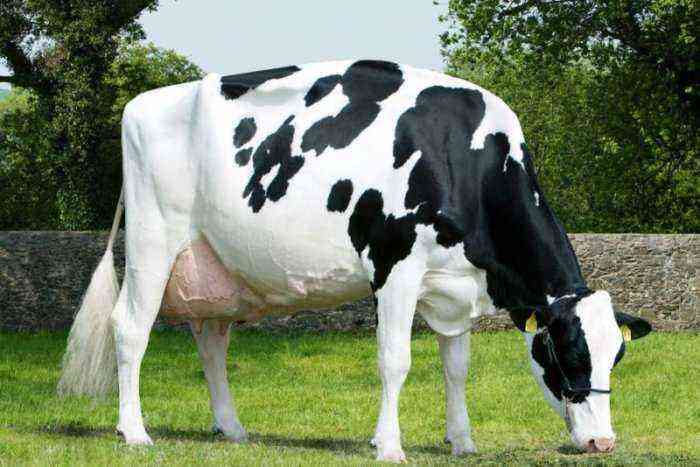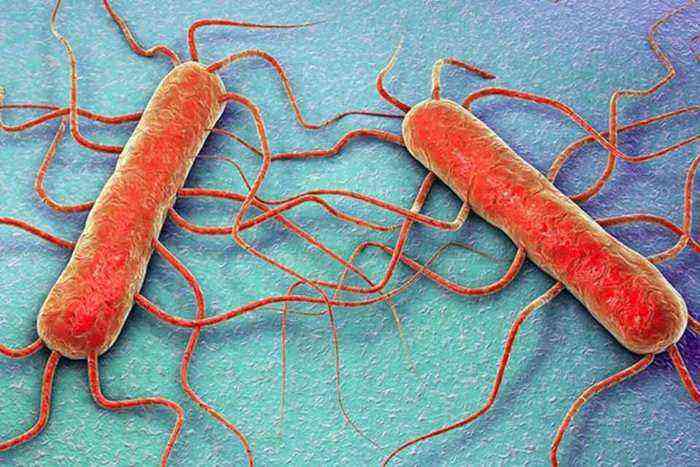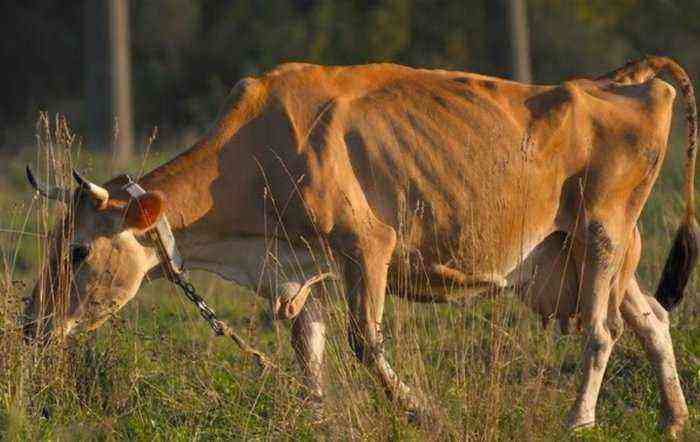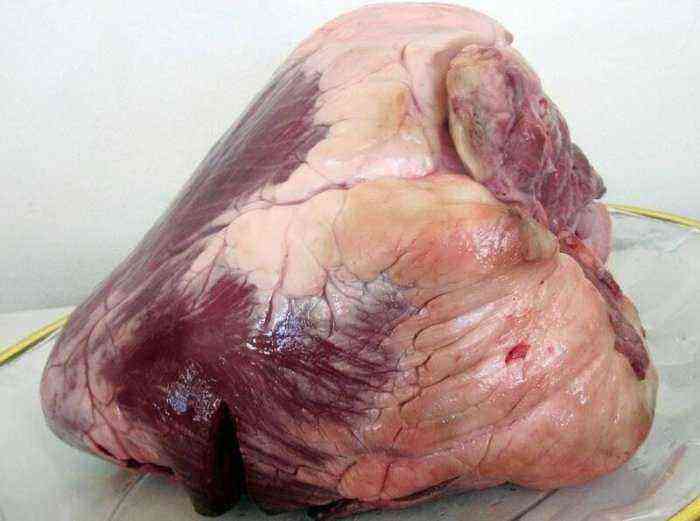Cattle calves are extremely sensitive to improper housing conditions, unbalanced diet and other adverse factors. Against their background, various dangerous diseases often develop. Among them is white muscle disease of calves, which involves the death of young animals in 60% of cases.
sick calf
Symptoms
White muscle disease (popularly called white mouse, also called myopathy in scientific sources) can be traced in calves, lambs, and some varieties of poultry. It is accompanied by severe muscle dystrophy and impaired metabolism of nutrients and minerals in the body. Also, the heart muscle is often negatively affected, which carries a particularly great risk to the life of young animals.
Reliable causes of the development of the disease in animals are unknown. Most researchers agree that it occurs as a result of a lack of certain vitamins and minerals in the body. Most often, outbreaks of the disease are recorded in the winter-spring period.
The following clinical manifestations are characteristic of the white mouse in an acute form:
- general oppression;
- loss of appetite;
- diarrhea;
- clouding of the eyes, which is accompanied by serous discharge from the conjunctiva;
- the same serous exudate is released from the nasal cavity;
- profuse salivation;
- rapid breathing and pulse;
- frequent convulsions;
- the calf can fall sideways and lie in this position for a long time without getting up.
In addition to convulsions, atypical movements, a constantly lowered head, and paralysis of certain parts of the body also indicate serious changes in the nervous system. Also, the disease is often accompanied by bloating.
All of these symptoms can appear together or separately. In some cases, the disease is completely asymptomatic.
Forms
The disease in cattle calves can manifest itself in three main forms:
- Sharp.
- Adjust.
- Chronic.
Acute form
In this form, the disease in most cases manifests itself with a complete list of clinical signs. It is accompanied by general depression, rapid breathing, disturbances in the work of the intestines, convulsions and paralysis of the limbs. There must be discharge from the eyes and nose.
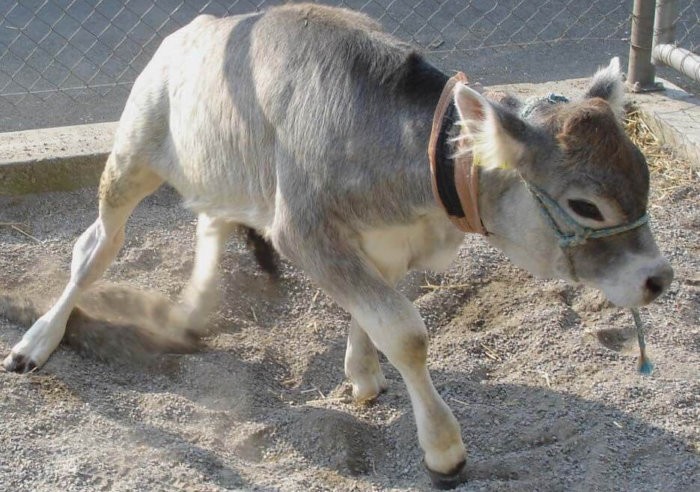
Acute calf disease
This form of the disease has the highest mortality rate. The disease lasts in young animals for 7 days.
In rare cases, the acute form of the disease may be asymptomatic. In this case, it ends in sudden death. At the same time, it is almost impossible to identify the disease.
Subacute form
In the subacute course, the symptoms are less pronounced. It is characterized by mild depression, loss of appetite, wheezing in the chest area. It is worth noting that this form of the white mouse significantly reduces the body’s resistance, making it vulnerable to other diseases. As a result of this, the baby also often develops pleurisy and inflammation.
On average, this form lasts 14-30 days. And in 60% of cases it ends with the death of the animal.
chronic course
This manifestation is typical for young animals whose age has already exceeded 3 months. Symptoms in this case are similar to the clinical picture of acute and subacute forms. The development of the animal slows down sharply, muscular dystrophy is traced.
Attention! The cause of the development of the chronic course of the disease is violations of the conditions of detention and improper treatment of a newborn baby.
Diagnostics
Diagnosis of myopathy is carried out in a complex manner. Clinical manifestations and the results of the tests performed are taken into account. The data obtained are necessarily compared with the age of the calf to exclude similar diseases.
For the implementation of intravital diagnosis of the calf, fluoroscopy is performed. To study the nature of the work of the heart, electrocardiography is prescribed. It allows you to determine the damage to the heart muscle.
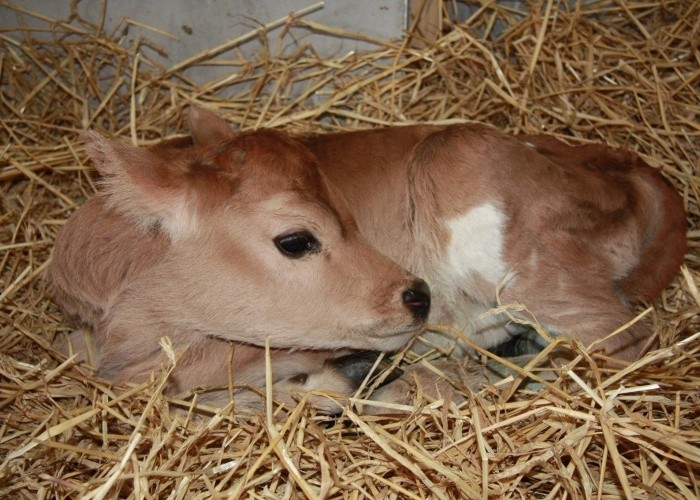
Calf needs an electrocardiogram
In the event of the death of a calf, myopathy is detected in it on the basis of characteristic pathological changes:
- obvious damage to skeletal muscles;
- enlarged heart and lungs;
- swelling in the fiber layer;
- the brain is softened.
Treatment
With the final diagnosis, the correct treatment of the animal should be organized as soon as possible. And the first thing to do is to transfer the sick baby to a separate box. There he is isolated from the rest of the herd, provided with warm bedding, plenty of water and a special diet. According to the recommendations of the veterinarian, it may include:
- carrot;
- quality hay;
- bran;
- fresh dairy products.
The box in which the animal is kept should be regularly cleaned of food debris and manure.
After organizing the proper conditions of detention, basic medical measures are carried out. There are no specific drugs to treat white muscle disease. Therefore, for this purpose, use:
- Sodium selenite in the form of a solution. It allows you to compensate for the lack of selenium in the body of the calf. The drug is injected subcutaneously.
- Methionine. This amino acid contributes to the resumption of disturbed metabolic processes.
- Tocopherol. It is also responsible for the normalization of metabolism.
- Cysteine.
Clear dosages of drugs are determined by the veterinarian in each case.
Additionally, camphor oil and cordiamine are introduced into the treatment course, which allow normalizing the functioning of the calf’s heart. With the complication of the underlying disease, secondary antibiotics must be used.
Important! Copper sulfate and chlorides of manganese and cobalt must be added to the feed in small quantities. They help the body absorb vitamins and nutrients more intensively, and also promote the production of blood cells.
Prevention
The main preventive measures in the fight against myopathy include:
- ensuring full conditions for keeping and feeding young animals;
- ensuring proper care of pregnant heifers;
- widespread use of vitamin and mineral complexes in livestock farms.
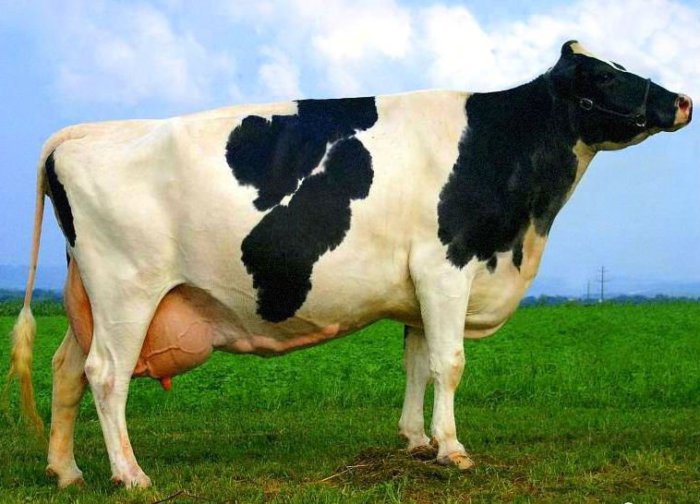
Calf cow
An effective way to prevent white mice is also injections of tocopherol and sodium selenite, which are sold for pregnant heifers and newborn calves. It is only worth considering that the prophylactic dose of the drug should be significantly lower than the therapeutic norm.
Conclusion
White muscle disease is one of the most dangerous diseases of young cattle. It assumes a high mortality of calves, and in those cases when the animal still gets sick, it can no longer catch up with its peers in development. Therefore, every cow breeder must know exactly the main signs of such a disease and how to provide first aid to the baby.
